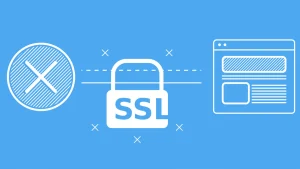The Difference Between a Standard VPS and a MikroTik VPS: Which One Is Right for You?
When choosing a server, one of the most important decisions is selecting the right type for your needs. The choice between a standard Virtual Private Server (VPS) and a MikroTik VPS is common for businesses and individuals seeking a robust and flexible network infrastructure. While both offer unique capabilities, the difference between a standard VPS and a MikroTik VPS is significant in several key areas. This article will provide a detailed comparison to help you make an informed decision and select the best option for your specific requirements.
What is a Standard VPS and What is it Used For?
A standard VPS is an isolated partition of a larger physical server that provides dedicated hardware resources such as CPU, RAM, and storage. In simple terms, a powerful server is divided into multiple smaller virtual servers, each operating independently. You can install various operating systems like Windows Server or Linux (Ubuntu, CentOS, etc.) on it.
The applications for a standard VPS are extensive:
- Hosting websites and applications: This is the most common use for a VPS, especially for high-traffic websites, online stores, and web-based applications.
- Database support: It is used for hosting and managing large and sensitive databases.
- Email hosting: Setting up dedicated email servers for businesses.
- Software development and testing: An isolated environment for developers to test code and applications.
- Running specific software: Executing software that requires significant hardware resources or a specific operating system.
What is a MikroTik VPS and What are its Advantages?
A MikroTik VPS is a specific type of VPS that has the MikroTik RouterOS operating system installed on it. MikroTik is a Latvian company famous for producing routers and network equipment, and RouterOS is their powerful and flexible operating system. This OS essentially turns the virtual server into an advanced router, firewall, and network management tool.
The advantages of a MikroTik VPS include:
- Advanced networking capabilities: It offers various routing protocols, VPN, VLAN, and QoS.
- High security: A powerful firewall and comprehensive security features to protect the network.
- Easy management: A graphical user interface (WinBox) and a strong command-line interface for simple management.
- Ideal for network professionals: Perfect for those who need precise control over network traffic, filtering, and bandwidth management.

Key Differences Between a Standard VPS and a MikroTik VPS
The difference between a standard VPS and a MikroTik VPS can be analyzed across several key aspects, which we will explore below.
Difference in Operating System and User Interface
The biggest difference between a standard VPS and a MikroTik VPS is in their operating system. A standard VPS offers more flexibility in OS choice; you can use Windows Server for Microsoft environments or various Linux distributions for open-source applications. Their user interfaces also vary; Windows has a familiar graphical environment, while Linux can use graphical interfaces like GNOME or KDE or just a command-line interface.
In contrast, a MikroTik VPS exclusively uses RouterOS. This OS features the WinBox graphical interface, which simplifies management for network professionals, and also provides advanced features through its command-line interface. This difference between a standard VPS and a MikroTik VPS in the operating system significantly impacts their use cases.
Difference in Networking and Firewall Capabilities
This is where the difference between a standard VPS and a MikroTik VPS becomes most apparent. MikroTik, with its RouterOS, is natively designed for network management and control. It offers advanced features like dynamic routing, MPLS, various VPN types (PPTP, L2TP, OpenVPN, IPSec), Quality of Service (QoS) for bandwidth management, and a very powerful firewall with complex rules. A MikroTik server essentially becomes a powerful network device.
A standard VPS can also have networking capabilities, but these are not as native and centralized as in MikroTik. Implementing advanced networking and firewall features in a standard VPS requires installing and configuring additional software, such as iptables in Linux or Windows Firewall, which is more complex and may not be as optimized as MikroTik. This difference between a standard VPS and a MikroTik VPS in networking capabilities simplifies decision-making for network experts.
Difference in Access and Management Level
On a standard VPS, you have full root or administrator access to the operating system. This allows you to install any software, perform any configuration, and have complete control over your server environment. This freedom is crucial for developers and system administrators who need high flexibility.
On a MikroTik VPS, your access is limited to the RouterOS environment, and you cannot install arbitrary software like on a standard VPS. The primary focus is on networking and routing capabilities. However, managing RouterOS with WinBox is very simple and user-friendly, making it an excellent option for network professionals familiar with routing and firewall concepts. This difference between a standard VPS and a MikroTik VPS in access level requires careful consideration by the user.

When Is a MikroTik VPS a Better Choice?
Given the difference between a standard VPS and a MikroTik VPS, a MikroTik VPS is a better choice in the following scenarios:
- Setting up a VPN server: If you need a dedicated and powerful VPN server with diverse capabilities.
- Managing bandwidth and traffic: For precise control over user bandwidth consumption, setting limitations, and prioritizing traffic (QoS).
- Advanced firewalling: Needing a strong firewall to protect your network or filter traffic based on complex rules.
- Setting up a Hotspot: For public networks like cafes, hotels, or educational institutions that need to manage user access.
- Advanced routing: For networks that require dynamic routing protocols or MPLS.
- Network professionals and ISPs: For small to medium Internet Service Providers and network specialists who need powerful networking tools.
Use Case Comparison in Real-World Scenarios
The difference between a VPS and a MikroTik VPS becomes clearer in real-world applications:
- For network professionals: If you are a network administrator and need a powerful router or firewall, the difference between a standard VPS and a MikroTik VPS favors MikroTik. You can create various VPN tunnels, manage traffic, and enhance your network security.
- For educational institutions: Schools and colleges that need to control student internet access, manage bandwidth, and create a hotspot can benefit from a MikroTik server.
- For Internet Service Providers (ISPs): Small and medium-sized ISPs can use MikroTik’s features for routing, client management, and traffic control.
- For professional users (e.g., developers): If you need a server for website development, running databases, or testing software, a standard VPS with a Linux or Windows OS is a better option. In these cases, the difference between a VPS and a MikroTik VPS favors the standard VPS.
Cloud Server as a More Flexible Option
In addition to the standard and MikroTik VPS, a more flexible and scalable option is the cloud server. Unlike a VPS, which is built on a single physical server, a cloud server uses resources from multiple interconnected physical servers. This architecture provides:
- High scalability: Cloud server resources can be easily increased or decreased, and you only pay for what you use.
- Higher stability: In case of an issue with one physical server, your service is quickly migrated to another, minimizing downtime.
- Flexibility: It allows for the installation of various operating systems and different software.
If you require greater flexibility, scalability, and stability, a cloud server can be a much better option, bridging the gap created by the difference between a VPS and a MikroTik VPS.

Conclusion: Choosing Between a Standard VPS and MikroTik
Ultimately, the choice between a standard VPS and a MikroTik VPS depends on your specific needs and goals.
If your purpose is to host a website, an application, a database, or run general software on common operating systems, and you require complete control over the server environment, a standard VPS is the ideal choice. It is suitable for most users and small to medium-sized businesses.
However, if your needs are specifically related to network management, advanced routing, a strong firewall, bandwidth management, or setting up a VPN/hotspot, the MikroTik VPS is the best option due to its specialized RouterOS. This server is unparalleled for network professionals, ISPs, and users who require precise control over their network traffic.
We hope this comprehensive article on the difference between a standard VPS and a MikroTik VPS has helped you make the best decision for your infrastructure. The difference between a standard VPS and a MikroTik VPS is a choice that should be made carefully based on your actual requirements.





